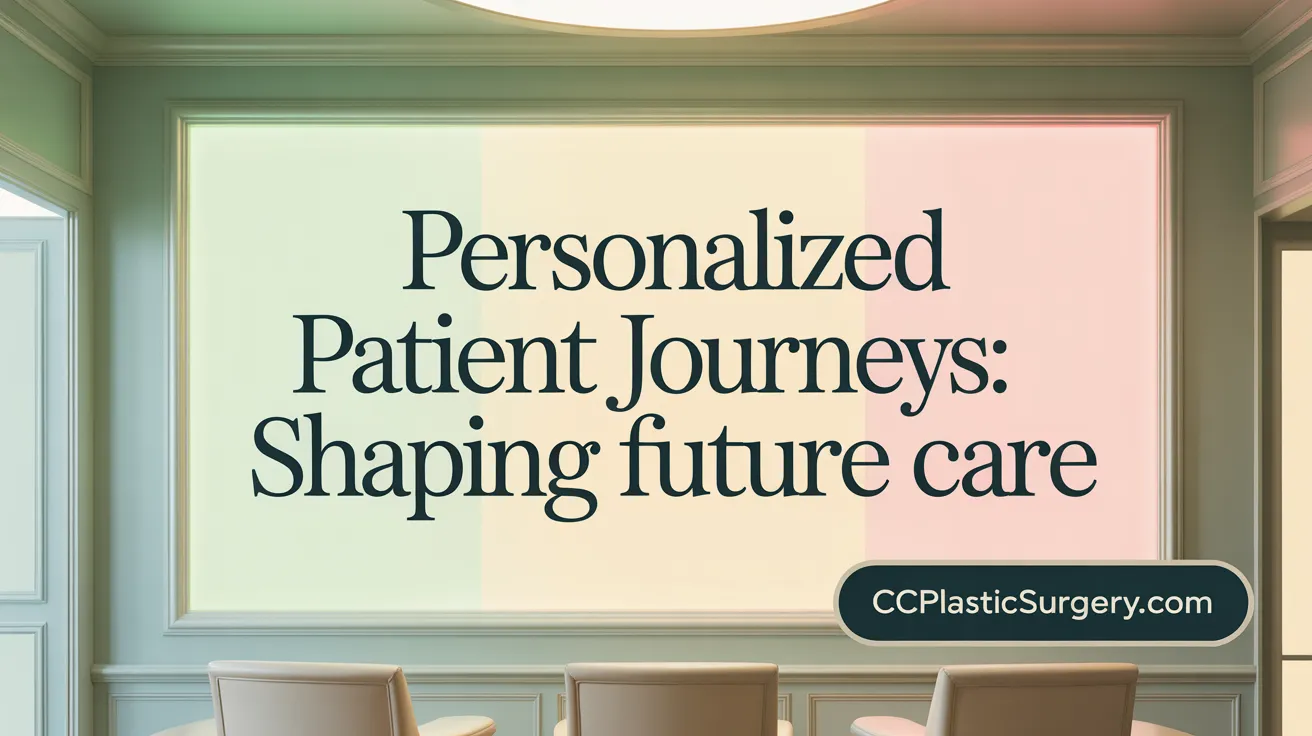
December 19, 2025
Discover how long before botox kicks in: Day-by-Day Timeline & Tips
Wondering how long before botox kicks in? Discover a day-by-day timeline, key factors, and when you will see the full effect.
Nov 4, 2025

In today’s healthcare landscape, patient stories are more than testimonials; they are powerful narratives that illuminate the human side of medicine. From overcoming rare diseases to navigating complex surgeries, these transformative journeys reveal resilience and hope. By listening to patients themselves, healthcare providers can cultivate empathy, improve care pathways, and foster a truly patient-centered approach. This article invites you to hear directly from those who have experienced profound healing and change, underscoring how personal stories enrich the medical community and empower others on similar paths.
Patient storytelling platforms serve as vital conduits for sharing real-life health journeys, bridging gaps between patients, caregivers, and healthcare providers. For example, platforms like Patient Experiences enable individuals with conditions such as Alzheimer’s disease, lupus, and cancer to share their personal experiences. These narratives not only educate and inspire peers facing similar challenges but also raise awareness within the broader medical community. By highlighting genuine patient perspectives, these platforms underscore the importance of the patient voice in shaping care approaches and encourage greater participation in clinical trials.
Numerous stories stand out for their emotional depth and advocacy impact. Ira and Sandy’s Alzheimer’s love story amid Alzheimer's illness reveals the human side of living with cognitive decline. Lupus advocate Shanelle Gabriel’s involvement in clinical trials exemplifies how patient voices can influence research involvement. Nina Beaty used art therapy as a creative outlet during cancer treatment, illustrating alternative coping mechanisms. Such stories showcase the capacity of storytelling to humanize diseases, foster empathy among audiences, and empower patients to speak up for their health needs.
Platforms like Patient Stories Platform partner with respected organizations to collect and amplify patient narratives across many therapeutic areas. Meanwhile, initiatives such as Johns Hopkins Medicine Story Booth gather patient and caregiver stories to improve patient-centered care. These efforts exemplify how storytelling is integrated within healthcare research and community networks, making patient experiences more visible and actionable.
By sharing personal journeys, patients illuminate the benefits and barriers of participating in clinical trials. This transparency boosts trial awareness and helps demystify the process for prospective participants. Furthermore, patient stories have a ripple effect, encouraging advocacy for improved healthcare policies and research priorities that better address patients’ needs.
| Aspect | Description | Example |
|---|---|---|
| Education & Inspiration | Sharing varied experiences to inform and motivate others | Patient Experiences on Alzheimer’s, lupus, cancer |
| Empathy & Humanization | Personal narratives bring emotional depth to medical conditions | Ira and Sandy’s Alzheimer’s journey |
| Research & Advocacy | Encouraging clinical trial participation and influencing research focus | Shanelle Gabriel’s lupus clinical trial involvement |
| Creative Coping Strategies | Highlighting alternative methods to manage illness | Nina Beaty’s art therapy during cancer treatment |

Patient journey mapping is a method that charts the course of a patient's experience with a health condition, focusing especially on those with rare diseases. This process captures their natural history and unique needs, helping healthcare providers recognize common challenges across patients. By doing so, it facilitates the creation of more effective care pathways tailored to patient requirements. Importantly, patient journey mapping empowers individuals by actively involving them in shaping their own healthcare experience, promoting greater patient-centered care.
To aid the creation of detailed patient journeys, organizations like EURORDIS provide comprehensive resources. These include guides, templates, surveys, consent forms, and assessment tools designed for patient representatives and healthcare teams. These resources ensure that the lived experiences of patients are systematically gathered and analyzed, which directly informs improvements in care delivery. This structured support allows for consistent development of journeys that truly reflect patient perspectives.
Engaging patients in developing their health narratives fosters empowerment by giving them an active voice in their care process. When patients contribute to mapping their journeys, they help identify gaps in care and express their preferences and needs. This collaboration not only enhances the quality of healthcare services but also strengthens patients’ confidence and commitment to their treatment plans. Overall, personalized journey mapping is a vital element of patient-centered healthcare, improving outcomes through deeper understanding and involvement, as demonstrated through patient participation in research and patient voice in healthcare.

Digital platforms like UpToDate Journeys play a vital role in maintaining patient engagement following hospital discharge. This service offers personalized, automated guidance and coaching closely aligned with individual care plans. It targets common post-discharge conditions such as heart failure, pneumonia, COPD exacerbations, and emergency department visits.
Through these tools, healthcare teams can sustain contact with patients, extending education and support beyond the clinical environment. For instance, nurses utilizing UpToDate Journeys increased post-discharge patient contact by 21%, reaching 80% of their target population. This continuous connection helps patients better adhere to treatment protocols and manage their health proactively. This is a key example of patient-centered care.
The effectiveness of these digital solutions stems from their combination of evidence-based content with empathetic delivery methods tailored to diverse learning styles. Multimedia formats and voice design ensure the material is accessible and engaging for all patients.
Moreover, these platforms emphasize meaningful engagement, allowing patients to become active participants rather than passive recipients of care. This approach supports improved health outcomes by addressing individual needs with compassion and precision, reflecting best practices in Multidisciplinary patient care and promoting the Patient voice in shaping care.
For further insight on patient-centered approaches, see resources about Patient-centered care and explore the Guide to developing a Patient Journey.

UCSF Health shares inspiring accounts of patients overcoming formidable health challenges. These include individuals recovering from brain tumors, heart attacks, kidney transplants, and various cancers. The stories highlight the use of advanced personalized treatments such as minimally invasive heart valve replacements, customized brain surgeries, clinical trials for experimental therapies, and organ transplantation involving both deceased and living donors. These narratives showcase the breakthroughs and life-changing successes made possible through innovative medical approaches. Read more about these Patient recovery stories, Brain tumor patient journey, Heart attack recovery experience, Kidney transplant success stories, Cancer patient experiences, Advanced brain mapping treatments, Minimally invasive procedures, Clinical trials participation, Organ transplant patient stories, Customized brain surgery cases, Focused ultrasound treatments, Heart valve replacement stories, Kidney transplant chain cases, Botox for urinary incontinence, Living donor organ transplants, Second opinion importance in care, Innovative surgical techniques, Multidisciplinary patient care at UCSF, Compassionate patient care, Recovery from serious health challenges.
These patient journeys emphasize the profound role of Multidisciplinary patient care teams working together to provide not only cutting-edge treatments but also compassionate and comprehensive support. They highlight the importance of seeking second opinions and remaining hopeful amid critical illness. The experiences shared inspire patients and providers alike by demonstrating that advanced medical interventions, paired with empathetic care, can lead to remarkable recoveries and enhanced quality of life.
By sharing these real stories, UCSF Health brings to light the hope, resilience, and progress possible with modern medicine, ultimately fostering a deeper understanding and trust in complex medical care.

Projects such as the MyPaTH Story Booth play a crucial role in healthcare by directly collecting experiences from patients and caregivers. These firsthand stories shed light on emotional support needs and practical challenges faced during treatment, contributing to more patient-centered care. The insights gathered help clinicians better understand patients' journeys beyond clinical symptoms, fostering empathy and tailored care improvements.
Collaboration across research institutions enhances storytelling initiatives significantly. The MyPaTH Story Booth, part of the PaTH Clinical Data Research Network, involves multiple universities including Johns Hopkins, Penn State, and Temple University. This networked approach broadens the diversity of patient experiences collected, enriching the data quality and research outcomes. Such joint efforts increase validity and ensure care strategies are informed by a wide range of patient perspectives.
Collecting these narratives is vital for identifying unmet needs and gaps in care pathways. Systematic story gathering informs researchers and healthcare providers, enabling evidence-based improvements in treatment protocols and supportive services. For detailed guidance, refer to the EURORDIS Patient Journey Guide.
Patient stories reveal emotional experiences often overlooked by clinical data alone. Sharing and analyzing these stories promotes empathy among healthcare teams and strengthens emotional support mechanisms for patients and families, as emphasized in Patient Experiences and Storytelling.
Networks combining data and stories across centers create a comprehensive view of patient experiences. This collective knowledge underpins initiatives aimed at enhancing healthcare delivery and outcomes through collaboration with multiple research centers and storytelling initiatives.
| Aspect | Description | Impact |
|---|---|---|
| Patient Story Collection | Personal narratives from patients and caregivers | Drives patient-centered care improvements |
| Emotional Support Enhancement | Focus on patient feelings and experiences | Builds empathy and supportive care |
| Institutional Collaboration | Multiple research centers and hospitals | Improves data diversity and research strength |
The transformative journeys shared by patients and caregivers serve as vital beacons in modern healthcare. By embracing these stories—whether through dedicated storytelling platforms, journey mapping, or innovative digital engagement tools—providers gain invaluable insights that drive compassionate, personalized care. The collaboration between patients, clinicians, and researchers fosters an environment where healing extends beyond procedures to encompass understanding and empowerment. As we continue to listen and learn from those who walk these paths, the healthcare community strengthens its commitment to truly patient-centered care, offering hope and guidance to all who embark on their own journeys of healing.

December 19, 2025
Wondering how long before botox kicks in? Discover a day-by-day timeline, key factors, and when you will see the full effect.

December 19, 2025
Discover How Body Contouring Enhances Confidence and Shape

December 19, 2025
Your Guide to a Successful Plastic Surgery Consultation